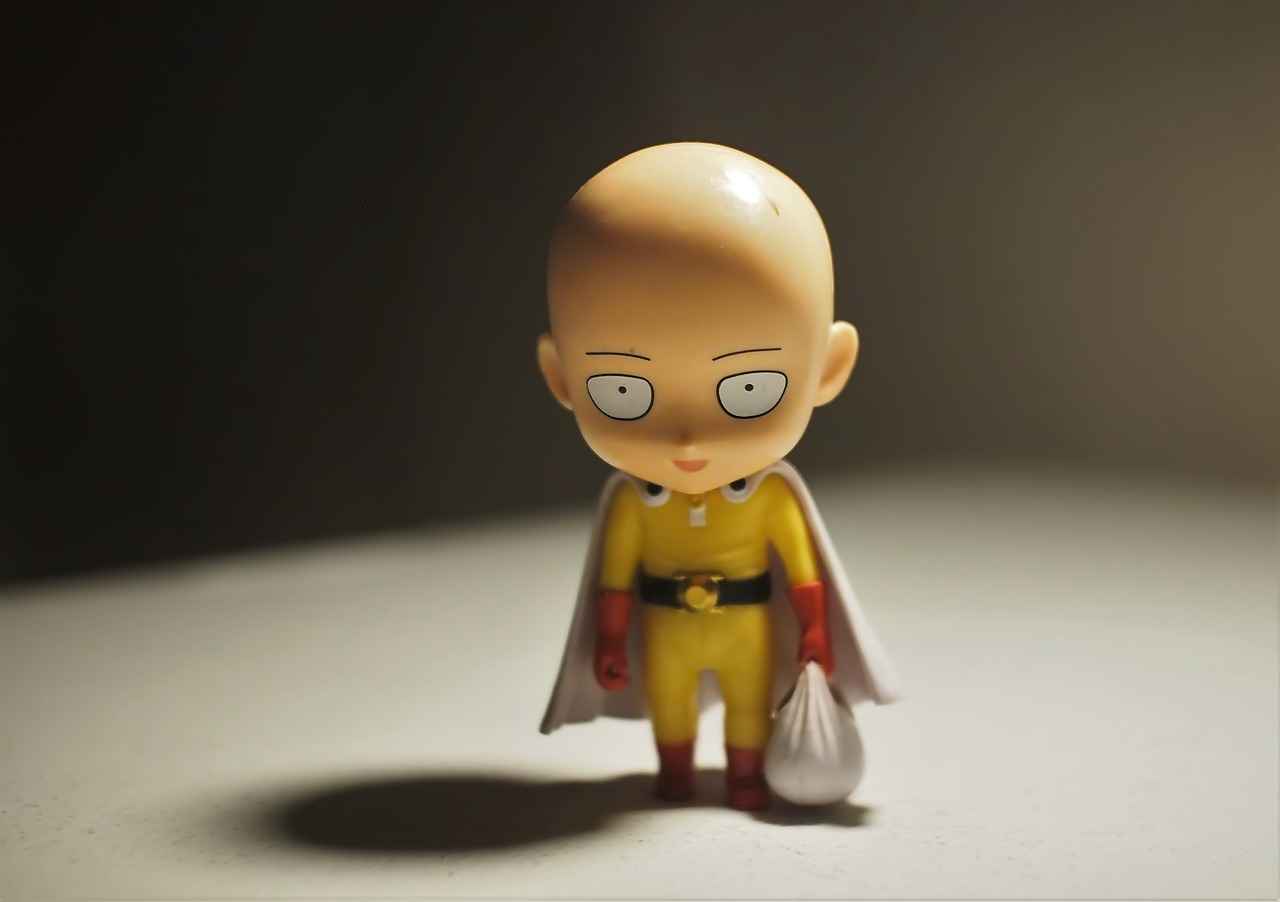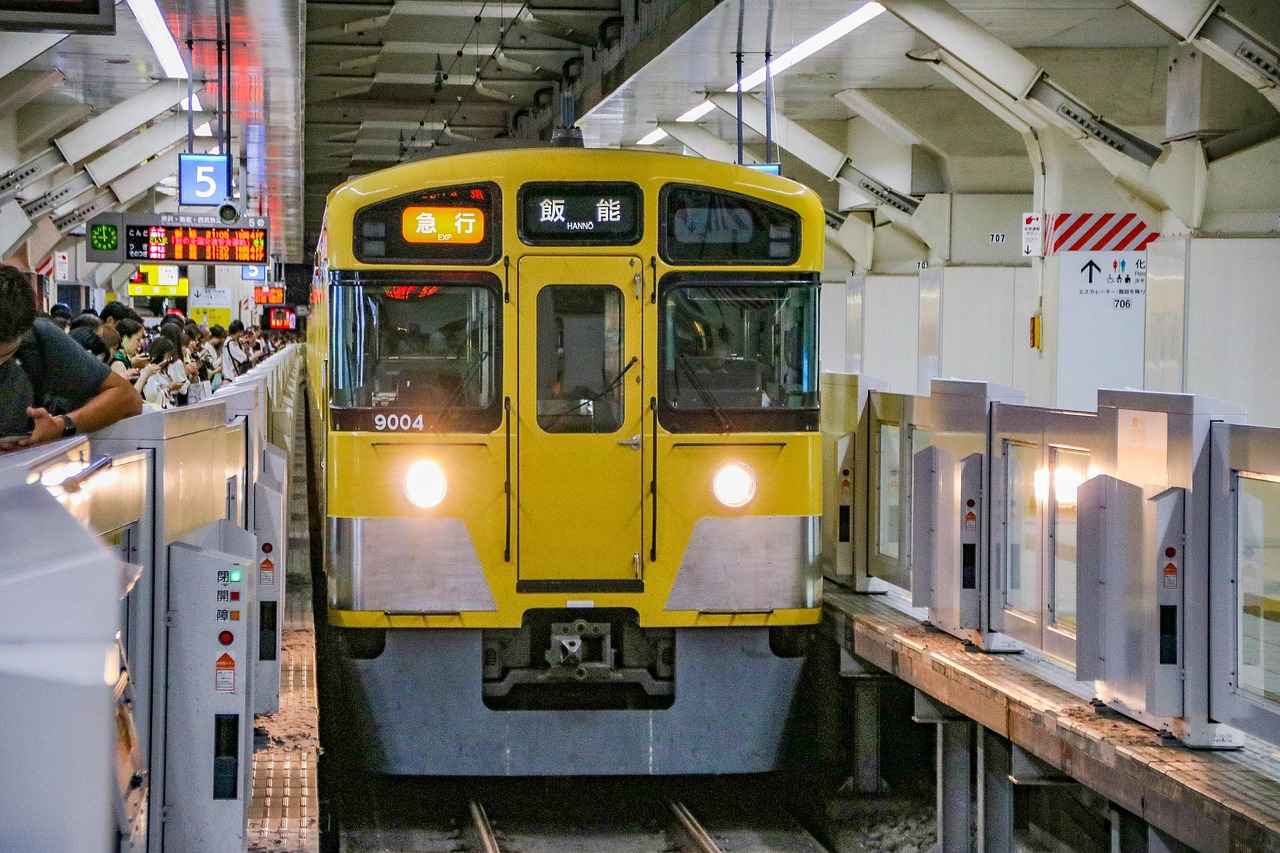This article delves into the fascinating evolution of Saitama, the protagonist of One Punch Man. We will examine his unmatched strength, personal motivations, and the overarching themes that solidify his status as the most powerful hero in the series.
The Origin of Saitama
Saitama’s journey begins in a modest setting, where he leads a mundane life filled with boredom and unfulfilled dreams. His desire to become a hero stems from a childhood filled with admiration for superheroes. After a fateful encounter with a monster, he decides to embark on a rigorous path of training, determined to gain the strength to protect others.
The Training Regimen of a Hero
Central to Saitama’s incredible power is his infamous training routine. He follows a simple yet intense regimen: 100 push-ups, 100 sit-ups, 100 squats, and a 10-kilometer run every day. This seemingly absurd routine is pivotal in transforming him into the hero capable of defeating any foe with a single punch.
The 100 Push-Ups, 100 Sit-Ups, 100 Squats Challenge
Through his daily challenge, Saitama builds not only physical strength but also immense endurance. This section will explore how his commitment to this routine shapes his character and contributes to his legendary status.
The Role of Humor in His Strength
Interestingly, Saitama’s overwhelming power is often contrasted with comedic elements. The humor embedded in his character adds depth to the narrative, allowing viewers to connect with his struggles and triumphs on a more personal level.
The Philosophy of Strength and Loneliness
While Saitama possesses extraordinary strength, it comes with unexpected consequences. This section discusses the themes of loneliness and the search for meaning that permeate his journey as he grapples with boredom and a longing for genuine connections.
Iconic Battles and Their Significance
Saitama’s battles are not merely about showcasing his strength; they also reveal his character’s depth. From his epic fight against Boros to his interactions with fellow heroes, each confrontation serves as a pivotal moment in his development.
The Legacy of Saitama
As One Punch Man continues to evolve, Saitama’s legacy is firmly established. His influence on future heroes and the broader anime culture is profound, making him a symbol of resilience and strength in contemporary media.
Conclusion
Saitama’s journey is a rich tapestry of strength, humor, and existential reflection. His character not only entertains but also invites viewers to ponder deeper philosophical questions about power and connection.

The Origin of Saitama
Saitama’s journey begins in a modest neighborhood, where he lived a life that many would consider unremarkable. Before donning the title of a hero, he was an ordinary man with dreams of becoming strong. His daily life was filled with mundane activities, and he was often overlooked by those around him. However, a turning point came when he encountered a series of monsters and villains wreaking havoc in his city. This ignited a fire within him, pushing him to pursue heroism against all odds.
What truly motivates Saitama is the desire to protect others and prove his own worth. He was once inspired by the heroic deeds of others, dreaming of becoming a powerful hero himself. This aspiration led him to embark on a rigorous training regimen that would change his life forever. His determination was fueled by a promise he made to himself: to become the strongest hero and to never give up, regardless of the challenges he faced.
Despite his overwhelming strength today, Saitama’s journey was not without struggles. He faced numerous challenges during his training, including physical exhaustion and moments of self-doubt. However, his unwavering commitment to his goal allowed him to push through these hardships. His infamous training routine, consisting of 100 push-ups, 100 sit-ups, 100 squats, and a 10-kilometer run each day, became the cornerstone of his transformation.
As Saitama developed his strength, he also began to grapple with the existential crises that accompany such power. The more formidable he became, the more isolated he felt from others. This paradox of strength and loneliness is a recurring theme in his journey, shaping not only his character but also the narrative of One Punch Man.
In summary, Saitama’s origin story is a compelling tale of determination, resilience, and the quest for meaning in a world where true strength often leads to unexpected challenges.

The Training Regimen of a Hero
Saitama’s journey to becoming the hero we know today is not just a matter of fate; it is deeply rooted in his rigorous training regimen. His infamous routine, often met with skepticism due to its simplicity, has proven to be the cornerstone of his immense power and resilience.
At the heart of Saitama’s training is a straightforward yet demanding daily schedule that he adheres to without fail. This regimen includes:
- 100 Push-Ups
- 100 Sit-Ups
- 100 Squats
- 10 km Running
Each component of this routine is designed to build strength, endurance, and mental toughness. Saitama believes that consistency is key, as he performs these exercises every single day, regardless of the circumstances. This unwavering dedication is a testament to his character and serves as an inspiration for many aspiring heroes.
Moreover, Saitama’s training is not just physical; it also has significant psychological benefits. The discipline required to maintain such a rigorous routine fosters a strong mental fortitude. Saitama learns to push through discomfort and fatigue, which ultimately enhances his resolve in battle.
When compared to other heroes in the One Punch Man universe, Saitama’s training stands out for its sheer absurdity. Many heroes undergo complex training regimens involving advanced techniques and specialized equipment. In contrast, Saitama’s approach is refreshingly simple, yet it yields results that are nothing short of extraordinary.
In conclusion, Saitama’s training regimen is a critical element that shapes not only his physical abilities but also his character. It highlights the importance of dedication and discipline in achieving greatness, making him a unique figure in the realm of superheroes.
The 100 Push-Ups, 100 Sit-Ups, 100 Squats Challenge
is not just a simple workout routine; it is the cornerstone of Saitama’s incredible strength and endurance in One Punch Man. This seemingly straightforward regimen has become iconic among fans and fitness enthusiasts alike, symbolizing the power of consistency and discipline.
Saitama’s daily workout consists of:
- 100 Push-Ups: A classic exercise that targets the chest, shoulders, and triceps, building upper body strength.
- 100 Sit-Ups: Essential for core strength, sit-ups enhance Saitama’s stability and overall physical performance.
- 100 Squats: This lower body exercise develops leg strength and endurance, crucial for a hero who must be agile and powerful.
Alongside these exercises, Saitama emphasizes the importance of mental fortitude. His training is not just physical; it is a mental challenge that builds resilience and determination. By committing to this rigorous routine every day, he cultivates a mindset that is unyielding in the face of adversity.
Moreover, Saitama’s training is complemented by a few simple lifestyle choices:
- Eating a balanced diet: While not explicitly detailed in the series, it’s implied that nutrition plays a role in his training success.
- Getting sufficient sleep: Recovery is a vital part of any workout regimen, and Saitama ensures he gets enough rest.
- Staying motivated: His desire to become a hero drives him to stick to his routine, showcasing the importance of having a goal.
This challenge not only serves as a physical workout but also represents Saitama’s journey towards becoming the strongest hero. It is a reminder that sometimes, the simplest methods can yield the most extraordinary results.
Psychological Impact of His Training
The Psychological Impact of Saitama’s Training
Saitama, the protagonist of One Punch Man, is not just defined by his extraordinary physical strength; his mental resilience is equally crucial. This section delves into the psychological impact of his rigorous training regimen, highlighting how discipline and perseverance have shaped his character and heroism.
At the core of Saitama’s transformation is his unwavering dedication to his training routine. The infamous 100 push-ups, 100 sit-ups, 100 squats, and 10 kilometers of running each day may seem simplistic, yet they symbolize a profound commitment to self-improvement. This relentless pursuit of excellence fosters a strong sense of discipline that permeates all aspects of his life.
Moreover, the mental fortitude developed through this training contributes significantly to Saitama’s character. Unlike many heroes who rely on external validation, Saitama’s strength comes from an internal drive. He faces countless challenges with a calm demeanor, demonstrating that true heroism is not just about physical power but also about mental strength. This balance allows him to confront formidable foes without succumbing to fear or doubt.
Additionally, Saitama’s journey reflects a deeper philosophical message about the nature of strength and the sacrifices that come with it. As he becomes increasingly powerful, he grapples with feelings of loneliness and existential boredom. His ability to overcome these emotional hurdles showcases the resilience that his training has instilled in him, making him not only a hero but also a relatable character.
In conclusion, Saitama’s training is a testament to the importance of mental discipline in achieving greatness. His journey illustrates that the path to heroism is as much about psychological strength as it is about physical prowess, making him a unique and compelling figure in the realm of superheroes.
Comparison with Other Heroes’ Training
Saitama’s training methods stand out as one of the most absurd and unique approaches to heroism in the world of One Punch Man. Unlike many other heroes who undergo intense and often elaborate training regimes, Saitama’s simplicity is both striking and comical. His infamous routine consists of just 100 push-ups, 100 sit-ups, 100 squats, and a 10-kilometer run every day. This straightforward regimen, while seemingly minimalistic, has produced extraordinary results, making him the most powerful hero in the series.
In contrast, other heroes like Genos, the cyborg, engage in rigorous training that involves advanced technology and combat techniques. Genos constantly upgrades his body with new enhancements, believing that strength comes from technological advancements and rigorous martial arts training. This approach highlights the diversity in the training methods of heroes, where some rely on technology, while others, like Saitama, rely on sheer willpower and consistency.
Moreover, characters like Mumen Rider showcase a different aspect of heroism. His training is less about physical strength and more about the spirit of heroism and determination. Mumen Rider trains hard, but his efforts are often met with humorous failures, emphasizing that not all heroes need to possess overwhelming power to be admirable. This contrast to Saitama’s effortless strength brings a layer of depth to the narrative, showcasing that heroism can manifest in various forms.
Ultimately, Saitama’s training method serves as a parody of traditional superhero tropes. It emphasizes that sometimes, the most effective path to strength is not the most complicated one. This absurdity is what makes Saitama’s character resonate with audiences, as it challenges conventional ideas of what it means to be a hero.
The Role of Humor in His Strength
Saitama’s overwhelming power in One Punch Man is not merely a testament to his physical abilities; it is intricately intertwined with comedic elements that define his character and the series itself. This unique blend of humor and strength creates a narrative that resonates with audiences, making Saitama not just a hero, but a relatable figure.
At first glance, Saitama’s ability to defeat any opponent with a single punch might seem absurd and detached from reality. However, this comedic exaggeration serves a deeper purpose. It highlights the monotony and existential boredom that comes with being the strongest. Saitama’s nonchalant attitude towards battles often leads to humorous situations, where his overwhelming strength contrasts sharply with the seriousness of the threats he faces. For instance, in many episodes, he finds himself more concerned about missing a sale at the grocery store than the impending doom posed by a powerful villain.
This juxtaposition of intense action and lighthearted comedy not only entertains but also invites viewers to reflect on the nature of strength and heroism. Saitama’s struggles with boredom and the search for a worthy opponent are depicted through a comedic lens, making his journey both humorous and profound. The humor serves as a coping mechanism for his loneliness and the isolation that comes with unmatched power.
Moreover, the comedic interactions between Saitama and other characters enrich the narrative. His deadpan responses and the absurdity of his situations create a dynamic that keeps the audience engaged. For example, his interactions with Genos, his earnest yet naive disciple, often lead to moments that are both funny and heartwarming, showcasing the importance of companionship even for a hero like Saitama.
In conclusion, the role of humor in Saitama’s strength is pivotal. It not only enhances his character but also elevates the entire series, creating a unique blend of action and comedy that resonates with fans worldwide. Through this lens, Saitama becomes a symbol of the complexities of power and the human experience.

The Philosophy of Strength and Loneliness
is a profound theme that resonates deeply within Saitama’s journey in One Punch Man. While he possesses extraordinary power, his experiences reveal the complex nature of strength and its unforeseen consequences.
Saitama’s overwhelming abilities often lead to a sense of isolation. Despite being the strongest hero, he finds himself grappling with loneliness. This paradox emerges from the fact that few can challenge him, leaving him without true competition or camaraderie. His victories come too easily, resulting in a profound sense of boredom and a longing for genuine connection with others.
Moreover, Saitama’s strength raises existential questions. He embarks on a quest for meaning beyond mere physical prowess. This search reflects a broader theme: the idea that true strength is not solely defined by power, but also by the relationships we forge and the impact we have on others. His interactions with fellow heroes and villains highlight this struggle, as he navigates a world where he is both revered and misunderstood.
In his journey, Saitama encounters various characters who, unlike him, face significant challenges. These encounters often serve as a mirror, reflecting his own internal conflicts. The contrast between his effortless victories and the struggles of others emphasizes the emotional weight of his power.
Ultimately, Saitama’s story is a poignant exploration of what it means to be powerful. It invites viewers to consider the responsibility that comes with strength and the importance of connection in a seemingly isolated existence. Through his experiences, we learn that true fulfillment may lie not in conquering foes, but in understanding ourselves and building meaningful relationships.
Dealing with Boredom and Existential Crisis
Saitama, the protagonist of One Punch Man, is a hero whose unmatched strength allows him to defeat any opponent with a single punch. However, this extraordinary power comes with its own set of challenges, primarily boredom and a profound existential crisis. As he effortlessly overcomes foes, Saitama finds himself grappling with the emptiness that accompanies such overwhelming strength.
Despite his incredible abilities, Saitama often feels a sense of disconnection from the world around him. The thrill of battle, which once motivated him, has faded, leaving him to confront the reality of a mundane existence. This struggle is not just about physical strength; it resonates with the universal human experience of seeking purpose and connection.
- Searching for Meaning: Saitama’s journey highlights the importance of finding meaning in life beyond mere accomplishments. His quest for genuine relationships serves as a reminder that true fulfillment often lies in emotional connections.
- The Weight of Loneliness: As he navigates his role as a hero, Saitama’s loneliness deepens. His interactions with other heroes often reveal a stark contrast between his power and their struggles, emphasizing how his strength isolates him.
- Humor as a Coping Mechanism: The series cleverly employs humor to address Saitama’s existential dilemmas. His nonchalant attitude towards battles serves as a comedic relief, masking the deeper issues he faces.
Ultimately, Saitama’s existential crisis is a poignant reflection on the nature of strength and its impact on personal relationships. As he continues to seek out challenges, his journey encourages viewers to consider the value of connection and the importance of finding joy in the mundane.
In conclusion, Saitama’s experience with boredom and existential crisis serves as a profound commentary on the human condition, reminding us that even the strongest among us can feel lost in a world that often prioritizes power over connection.
The Impact on Relationships
Saitama’s journey as a hero in One Punch Man is not just defined by his overwhelming strength but also by the profound effect this power has on his relationships with others. Despite being the most powerful hero, Saitama often finds himself in a state of isolation, a stark contrast to the camaraderie typically found among heroes.
One of the most significant aspects of Saitama’s relationships is the disconnect that arises from his unmatched abilities. While other heroes struggle and grow through their battles, Saitama’s effortless victories create a barrier between him and his peers. This leads to moments where he feels misunderstood and alienated, as those around him cannot relate to the ease with which he defeats even the most formidable foes.
Moreover, Saitama’s interactions with characters like Genos and Mumen Rider highlight the contrast between their aspirations and his reality. Genos, who idolizes Saitama, seeks to become stronger through hard work and dedication, often failing to see that Saitama’s strength is not something that can be attained through traditional means. This dynamic creates a complex relationship where admiration is mixed with a sense of inadequacy.
Additionally, Saitama’s relationships are often punctuated by moments of humor, which serve as a coping mechanism for his loneliness. His deadpan responses and lack of enthusiasm in the face of danger can lead to comedic situations, yet they also underscore his struggle to find genuine connections. The comedic relief he provides does not negate the underlying loneliness he experiences; instead, it highlights the irony of being the strongest hero yet feeling so alone.
In conclusion, Saitama’s unparalleled strength not only defines his heroism but also shapes his relationships in profound ways. The isolation that comes with his power serves as a poignant reminder of the complexities of strength, companionship, and the human experience.

Iconic Battles and Their Significance
Saitama’s battles in One Punch Man transcend mere physical confrontations; they are profound reflections of his character and the overarching themes of the series. Each fight serves not only to showcase his incredible strength but also to delve into his personal struggles, motivations, and the complexities of heroism.
One of the most notable battles is against Lord Boros. This epic confrontation is not just a test of Saitama’s abilities but also a pivotal moment in his journey. The fight reveals Saitama’s true potential and the existential questions he grapples with. Despite his overwhelming power, Saitama finds himself yearning for a challenge, leading to a deeper exploration of what it means to be truly strong. The intensity of the battle emphasizes his loneliness, as he realizes that no opponent can match him, leaving him isolated in his prowess.
Another significant aspect of Saitama’s battles is his interactions with other heroes. His confrontations with fellow heroes such as Genos and Mumen Rider showcase the dynamics of heroism and the varying motivations behind becoming a hero. While some heroes fight for glory or recognition, Saitama’s motivations are rooted in a desire for genuine connection and understanding. This contrast highlights the absurdity of his situation; he is often seen as a mentor or a figure of inspiration, despite his own struggles with boredom and meaning.
Moreover, these battles serve as a commentary on the nature of strength itself. Through Saitama’s experiences, the series challenges traditional notions of heroism, suggesting that true strength lies not only in physical power but also in the ability to connect with others and find purpose. Saitama’s journey is a reminder that even the most powerful heroes can feel isolated and disconnected.
In conclusion, Saitama’s iconic battles are crucial for his character development and the thematic depth of One Punch Man. Each fight not only showcases his unmatched abilities but also reflects the complexities of strength, loneliness, and the search for meaning in a world where he stands alone at the pinnacle of power.
The Fight Against Boros
In the world of One Punch Man, few battles are as iconic as the clash between Saitama and Lord Boros. This epic confrontation not only showcases Saitama’s extraordinary capabilities but also delves into the deeper themes of power and purpose.
As the leader of the Dark Matter Thieves, Boros arrives on Earth with the intention of proving his strength against the strongest hero. His alien powers and regenerative abilities pose a significant challenge, pushing Saitama to reveal the full extent of his potential. Unlike previous foes, Boros presents a unique opportunity for Saitama to engage in a serious fight, igniting a spark of excitement that has long been absent from his life.
The battle unfolds in a dramatic fashion, with Boros displaying a range of devastating attacks, including his signature Collapsing Star Roaring Cannon. However, as the fight progresses, it becomes evident that Saitama’s strength is unparalleled. With each blow, he demonstrates not just raw power but also a profound understanding of combat, showcasing his ability to adapt and overcome.
This confrontation is pivotal as it reveals Saitama’s true potential. The fight serves as a testament to his training and discipline, emphasizing that his strength is not merely a product of physical prowess but also of mental fortitude. Despite the overwhelming odds, Saitama remains unfazed, illustrating his unique mindset as a hero.
Moreover, the battle against Boros highlights the limits of Saitama’s power. While he can defeat almost any opponent with a single punch, the fight raises questions about the nature of strength and the existential challenges that accompany it. Saitama’s victory is not just a demonstration of might; it also underscores the loneliness and boredom that come with being the strongest.
In conclusion, the fight against Boros is a defining moment in Saitama’s journey. It encapsulates the essence of his character—an overpowered hero seeking meaning in a world where he can no longer find joy in battle. This epic showdown not only cements his status as a formidable force but also deepens the narrative layers of One Punch Man, making it a must-watch for fans of the series.
Confrontations with Other Heroes
Saitama’s Confrontations with Other Heroes offer a unique lens through which we can examine the intricate dynamics of the hero community in One Punch Man. While Saitama is known for his overwhelming strength, his interactions with fellow heroes reveal much about their personalities, motivations, and the challenges they face.
Despite his incredible abilities, Saitama often finds himself in awkward situations with other heroes. For instance, his casual demeanor and nonchalant attitude towards threats can be disheartening for those who are genuinely striving to prove their worth. This contrast highlights the differences in their approaches to heroism and the burdens they carry.
- Genos: As Saitama’s devoted disciple, Genos embodies the drive and determination that many heroes possess. His admiration for Saitama often leads to humorous yet poignant moments, where Genos seeks validation from someone who can defeat any foe with ease.
- Bang: The seasoned martial artist Bang represents the traditional hero archetype. His interactions with Saitama emphasize the generational gap between heroes, showcasing how Saitama’s power challenges established norms.
- Other Class S Heroes: The interactions with heroes like Tatsumaki and Mumen Rider further illustrate how Saitama’s presence can evoke both admiration and frustration among his peers. While some heroes view him as a benchmark, others struggle with feelings of inadequacy.
The impact of Saitama’s strength on the hero community is profound. His ability to resolve conflicts with minimal effort often leads to existential questions among other heroes about their own value and purpose. This dynamic fosters a sense of camaraderie but also highlights the isolation that comes with being the strongest.
In conclusion, Saitama’s confrontations with other heroes reveal the complexities of heroism in a world where strength is both a blessing and a curse. As the series progresses, these interactions will continue to shape the hero community and challenge the very essence of what it means to be a hero.

The Legacy of Saitama
As One Punch Man continues to evolve, the legacy of its protagonist, Saitama, is becoming increasingly solidified. His journey is not just a tale of unmatched strength; it reflects deeper themes that resonate within the broader anime and manga culture. This section delves into the significant impact Saitama has made, both within the series and in the wider context of hero narratives.
Saitama’s influence extends beyond his impressive feats of strength. He has redefined what it means to be a hero in contemporary media. Traditionally, heroes are depicted as individuals who struggle against overwhelming odds, but Saitama’s character challenges this notion by showcasing the absurdity of having such power. His journey invites audiences to consider the philosophical implications of strength and the inherent loneliness that can accompany it.
Moreover, Saitama’s character has inspired a new generation of heroes in various media. Many creators draw from his experiences to craft characters that embody both strength and vulnerability. As a result, Saitama has become a symbol of resilience, illustrating that even the most powerful beings can grapple with existential crises and emotional isolation.
Fan reception of Saitama has also been overwhelmingly positive. He has become a cultural icon, representing not only physical prowess but also the struggle for meaning in a world where traditional heroism is often questioned. His ability to resonate with audiences has cemented his place in anime history.
In conclusion, Saitama’s legacy is multifaceted. He is not just a hero who can defeat any opponent with a single punch; he is a character that embodies the complexities of strength, loneliness, and the search for purpose. As One Punch Man continues to grow, Saitama’s impact will undoubtedly echo through the ages, influencing future narratives and inspiring countless fans around the world.
Influence on Future Heroes
Saitama, the protagonist of One Punch Man, has significantly altered the landscape of hero representation in contemporary media. His journey, marked by overwhelming strength and a unique blend of humor and existentialism, has set a new standard for hero narratives. This section delves into how Saitama’s character has influenced the portrayal of heroes for future generations.
One of the most striking aspects of Saitama’s character is his relatable nature. Unlike traditional heroes who often embody perfection, Saitama’s overwhelming power comes with a profound sense of boredom and loneliness. This duality allows audiences to connect with him on a deeper level, as he navigates the challenges of finding purpose in a world where he can defeat any foe with a single punch. Such themes have inspired a new wave of characters who reflect similar struggles, making them more relatable to viewers.
Moreover, Saitama’s absurd training regimen and simplistic approach to heroism challenge the conventional expectations of what it means to be a hero. His 100 push-ups, 100 sit-ups, 100 squats routine has become iconic, emphasizing that dedication and consistency can lead to extraordinary outcomes. This has encouraged creators to explore more unconventional hero origins, leading to a diverse array of characters who break the mold.
The humor interwoven into Saitama’s narrative also plays a crucial role in shaping future heroes. By juxtaposing serious themes with comedic elements, One Punch Man has opened the door for more lighthearted interpretations of heroism. This has led to an increase in characters who embrace humor as a vital part of their identity, making them more approachable and enjoyable for audiences.
In conclusion, Saitama’s influence extends beyond his own story, reshaping the portrayal of heroes in modern media. His relatability, unconventional training methods, and the integration of humor into serious narratives have paved the way for a new generation of heroes who resonate more deeply with audiences. As creators continue to draw inspiration from Saitama, we can expect to see a richer variety of heroes that reflect the complexities of modern life.
Fan Reception and Cultural Impact
Saitama, the protagonist of One Punch Man, has captured the hearts of fans worldwide, transcending the boundaries of traditional superhero narratives. His journey from an ordinary man to the most powerful hero has resonated deeply with audiences, making him a symbol of strength and resilience in popular culture.
One of the most compelling aspects of Saitama’s character is his relatability. Despite his overwhelming power, he grapples with existential boredom and a desire for genuine connections, which mirrors the struggles many face in their daily lives. This duality has created a unique bond between Saitama and his fans, as they see in him not just a hero, but a reflection of their own challenges.
Moreover, Saitama’s journey has sparked discussions about the nature of strength and what it means to be a hero. His ability to defeat any opponent with a single punch raises questions about the true essence of heroism. Is it merely about power, or is it also about the journey and the struggles one faces along the way? This philosophical underpinning has led to a rich tapestry of fan theories and interpretations, further solidifying Saitama’s place in popular culture.
In addition, the humor woven into Saitama’s character adds another layer to his appeal. The juxtaposition of his mundane life with his extraordinary abilities creates a comedic effect that resonates with fans, making them laugh while also prompting deeper reflections on the themes of the series. This blend of action and comedy has not only attracted a diverse audience but has also inspired countless memes and fan art, showcasing Saitama’s cultural significance.
As a result, Saitama has become more than just a character in a manga; he is a cultural icon. His influence can be seen in various forms of media, from video games to merchandise, reflecting his status as a beloved figure in the anime community. Fans often cite him as a source of inspiration, embodying the idea that true strength lies not just in physical prowess but in the resilience to face life’s challenges.
In conclusion, Saitama’s character has left an indelible mark on popular culture, representing a blend of strength, humor, and relatability. His impact continues to grow as new fans discover One Punch Man, ensuring that his legacy as a symbol of resilience endures for years to come.
